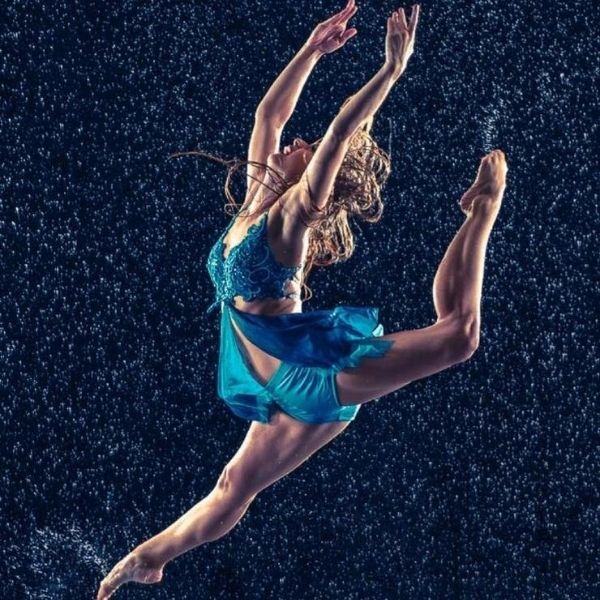Welcome back to the Dancer blog! Last week we discussed oversplits and the harmful effects they have on a dancer’s body. This week, we’re talking about the difference between stretching and warming up.
A lot of dancers tend to approach these two very similarly and it’s actually to their detriment. The big difference between stretching and warming up really comes down to the goals you’re trying to accomplish. With stretching, the goal should be to increase flexibility by allowing muscles to relax into new, lengthened positions. The emphasis here is on flexibility, not preparing to dance. Adversely, when warming up, the goal should be to increase your core temperature as well as blood flow in order to prepare your body for the stresses of dance movement. Here the emphasis is on preparedness, not flexibility.
The difference may seem obvious but the reality is that I constantly see students and professionals alike utilizing static stretches as a way to prepare for dance. When I was still performing, I was guilty of this too. I would start each day by stretching at the bar trying to get as limber as possible prior to class or rehearsal. Little did I know, I was actually fatiguing my body by doing this.
This is because, when you stretch, you are attempting to relax your muscles into new, lengthened positions. Positions, that over time, allow for an overall increased range of motion. But how does this happen?
When you stretch, your muscles contract in order to resist lengthening into positions they are not used to. This resistance is experienced as a tightness while you stretch. When a muscle contracts it uses energy in the form of a chemical compound called ATP (Adenosine triphosphate). As you hold that stretch for a prolonged period of time, what you’re doing is forcing that muscle to burn up its supply of ATP. Once that supply is burned up, the muscle can no longer contract and as a result, relaxes into a new, lengthened position. Rinse and repeat over time and you can condition muscles to comfortably lengthen into longer and longer positions thus increasing overall flexibility.
So how does stretching fatigue my body? Well, like we just said, when you stretch the goal is to burn up a muscle’s supply of ATP. That’s what allows for the increase in flexibility. But without ATP the muscle is left without energy. This means fatigue for the dancer who is now trying to engage that muscle while they dance. This is why, while stretching is a great way to increase flexibility, it shouldn’t be used as a warm up prior to dancing. Stretching depletes a muscle’s energy which in turn leads to instability which can then lead to injury. In fact, the best thing to do after stretching is to relax and give your body time to resupply the now depleted ATP.
Ok, so what SHOULD I do to warm up? The short answer is something called dynamic stretching. Unlike your typical stretching also known as static stretching, dynamic stretching does not ask you to sit in a stretched position for an extended period of time. Rather, with dynamic stretching, the goal is to move through your full range of motion, starting small and raming up from there.
In dance terms: instead of sitting in a split for 5 minutes, perform a series of leg swings beginning in tendu and slowly increase the height building up to a full battlement. Unlike static stretching, which burns up ATP through constant muscular contraction, dynamic stretching allows for intermittent contraction of the muscle, conserving its ATP supply, while having the added benefit of increasing your core temperature as well as your blood flow to the muscles being engaged. This means that the muscles are now supplied with the nutrients they need in order to withstand the stresses of dance. This is true for any area of flexibility that you want to have access to while dancing but don’t want to be fatigued by static stretching.
So we covered a lot of ground today on the finer differences between stretching and warming up. Tune in next week when I finish up this mini-series on stretching by looking at how flexibility and strength play off of each other and how finding a balance between the two are key to a long and healthy dance career.
One more thing! Starting this week I will be featuring real life dancers who I have worked with and think are generally awesome people! This is just my little way of showcasing some amazing athletes and performers who have given their blood, sweet and tears doing what they love. This week we have Dr. Holly Stephens, pictured below. Dr. Holly’s story is a lot like mine. She’s a former professional dancer who went back to school to become a doctor of chiropractic. She is also one of my closest friends and an all around amazing person! Fun fact, Dr. Holly’s professional credits include a Bollywood commercial!





